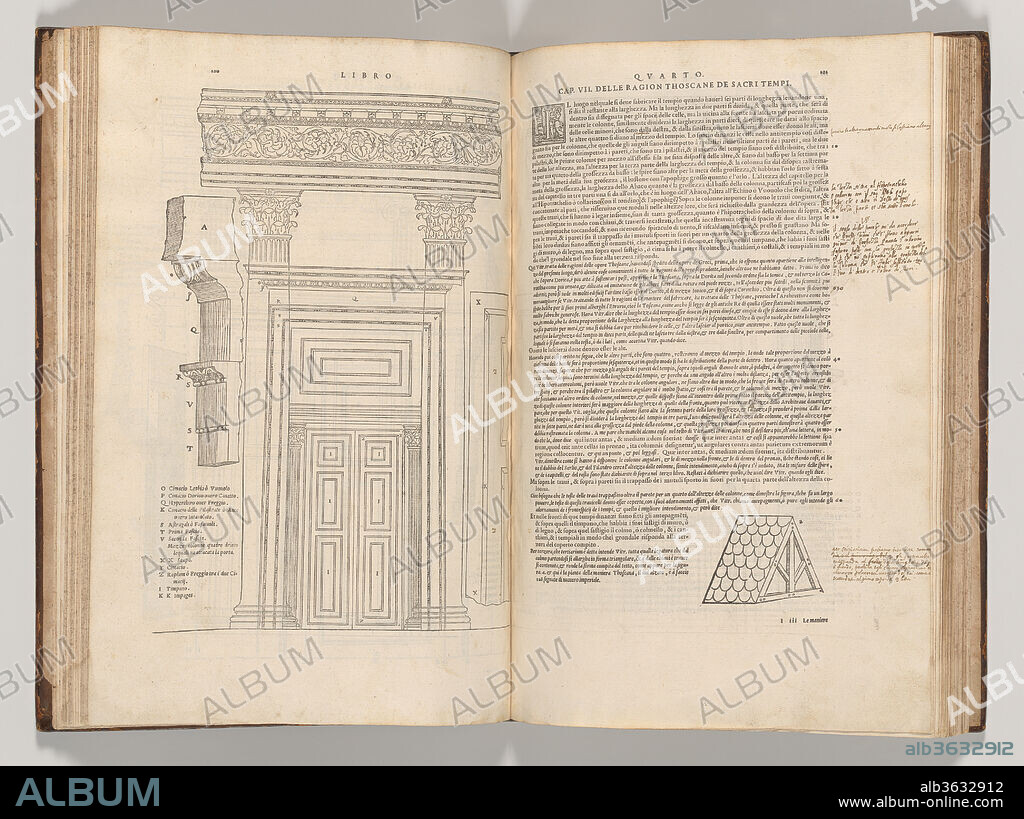alb3632912
I dieci libri dell'architettura di M. Vitruvio tradutti et commentati da monsignor Barbaro eletto patriarca d'aquileggia

|
Ajouter à une autre Lightbox |
|
Ajouter à une autre Lightbox |



Avez-vous déjà un compte? S'identifier
Vous n'avez pas de compte ? S'inscrire
Acheter cette image.
Sélectionnez l'usage:

Titre:
I dieci libri dell'architettura di M. Vitruvio tradutti et commentati da monsignor Barbaro eletto patriarca d'aquileggia
Légende:
Voir la traduction automatique
I dieci libri dell'architettura di M. Vitruvio tradutti et commentati da monsignor Barbaro eletto patriarca d'aquileggia. Author: Marcus Pollio Vitruvius (Roman, active late 1st century B.C.). Designer: Illustrations designed in part by Andrea Palladio (Italian, Padua 1508-1580 Vicenza). Dimensions: 14 13/16 x 11 1/8 x 1 1/4 in. (37.6 x 28.2 x 3.1 cm). Illustrator: Some illustrations attributed to Giuseppe Salviati (Giuseppe Porta, called Il Salviati) (Italian, Castelnuovo di Garfagnana ca. 1520-ca. 1575 Venice). Published in: Venice. Publisher: Francesco Marcolini da Forli (Italian, Forli ca. 1500-after 1559 Venice). Translator: Translation and commentary by Daniele Barbaro (Italian, 1514-1570). Date: 1556.
The ten books of architecture by Marcus Pollio Vitruvius are the only text devoted to the art of building that remained from Roman Antiquity. The text was a great resource for Renaissance artists and architects who wished to learn and apply the Antique principles for their modern constructions. Initially, the text was hard to access, however, as it was written in Latin and was unillustrated. During the fifteenth century the first vernacular translation appeared in Italy, and in 1511, Fra Giovanni Giocondo published the first illustrated edition of the text. Vitruvius' text became a point of reference for all subsequent architectural treatises and as such, the genre of Renaissance architecture publications is marked by a high level of inter-referentiality. This specific copy of Daniele Barbaro's translation of Vitruvius is a very special case, however, as the text was (partially) illustrated by the well-known architect Andrea Palladio, who later published his own architectural treatises, and the book was owned by his direct successor, the architect Vincenzo Scamozzi.
Technique/matériel:
Printed book with woodcut illustrations
Musée:
Metropolitan Museum of Art, New York, USA
Éditeur:
Francesco Marcolini da Forli (Italian, Forli ca. 1500-after 1559 Venice)
Crédit:
Album / Metropolitan Museum of Art, NY
Autorisations:
Modèle: Non - Propriété: Non
Questions sur les droits?
Questions sur les droits?
Taille de l'image:
4200 x 3143 px | 37.8 MB
Taille d'impression:
35.6 x 26.6 cm | 14.0 x 10.5 in (300 dpi)
Mots clés:
 Pinterest
Pinterest Twitter
Twitter Facebook
Facebook Copier le lien
Copier le lien Email
Email
